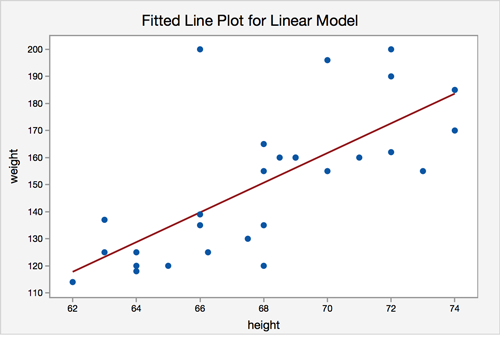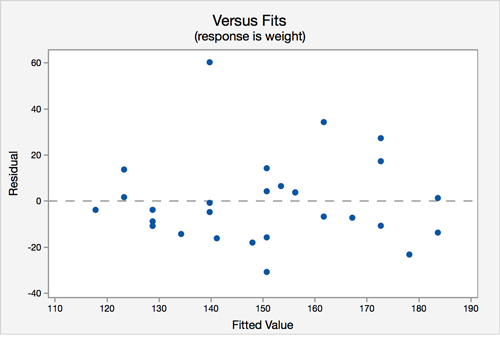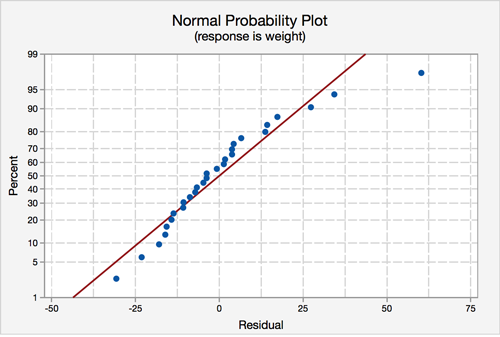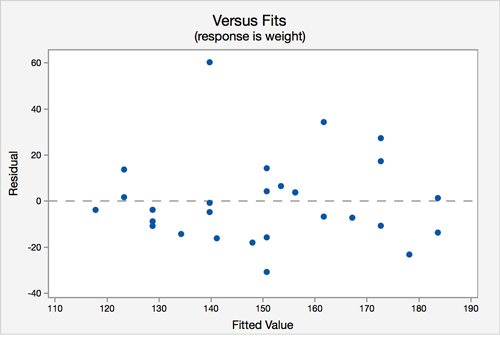
Lorem ipsum dolor sit amet, consectetur adipisicing elit. Odit molestiae mollitia laudantium assumenda nam eaque, excepturi, soluta, perspiciatis cupiditate sapiente, adipisci quaerat odio voluptates consectetur nulla eveniet iure vitae quibusdam? Excepturi aliquam in iure, repellat, fugiat illum voluptate repellendus blanditiis veritatis ducimus ad ipsa quisquam, commodi vel necessitatibus, harum quos a dignissimos.
Close Save changesHelp F1 or ? Previous Page ← + CTRL (Windows) ← + ⌘ (Mac) Next Page → + CTRL (Windows) → + ⌘ (Mac) Search Site CTRL + SHIFT + F (Windows) ⌘ + ⇧ + F (Mac) Close Message ESC
In this section, we will present the assumptions needed to perform the hypothesis test for the population slope:
\(H_0\colon \ \beta_1=0\)
\(H_a\colon \ \beta_1\ne0\)
We will also demonstrate how to verify if they are satisfied. To verify the assumptions, you must run the analysis in Minitab first.
Recall that we would like to see if height is a significant linear predictor of weight. Check the assumptions required for simple linear regression.
The data can be found here university_ht_wt.txt.
The first three observations are:
| Height (inches) | Weight (pounds) |
|---|---|
| 72 | 200 |
| 68 | 165 |
| 69 | 160 |
To check the assumptions, we need to run the model in Minitab.
Using Minitab to Fit a Regression Model
To find the regression model using Minitab.
Note! Of the 'four in one' graphs, you will only need the Normal Probability Plot, and the Versus Fits graphs to check the assumptions 2-4.
The basic regression analysis output is displayed in the session window. But we will only focus on the graphs at this point.
The graphs produced allow us to check our assumptions.
Assumption 1: Linearity - The relationship between height and weight must be linear.

The scatterplot shows that, in general, as height increases, weight increases. There does not appear to be any clear violation that the relationship is not linear.
Assumption 2: Independence of errors - There is not a relationship between the residuals and weight.

In the residuals versus fits plot, the points seem randomly scattered, and it does not appear that there is a relationship.
Assumption 3: Normality of errors - The residuals must be approximately normally distributed.

Most of the data points fall close to the line, but there does appear to be a slight curving. There is one data point that stands out.
Assumption 4: Equal Variances - The variance of the residuals is the same for all values of \(X\).

In this plot, there does not seem to be a pattern.
All of the assumption except for the normal assumption seem valid.